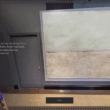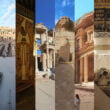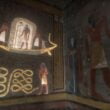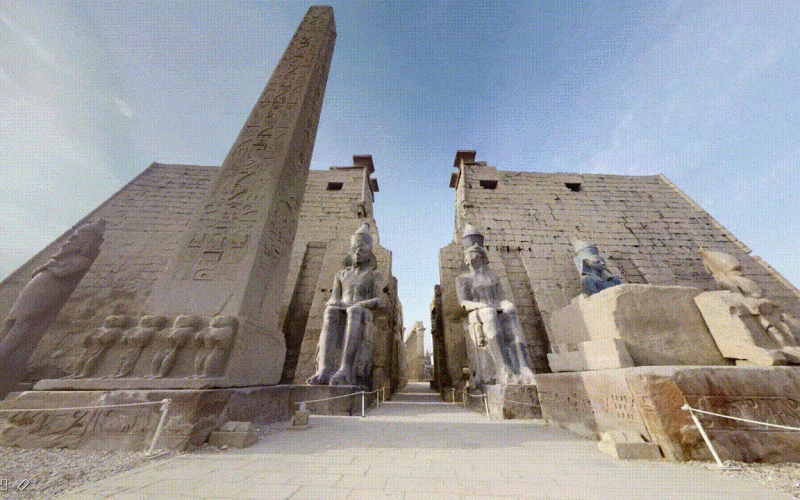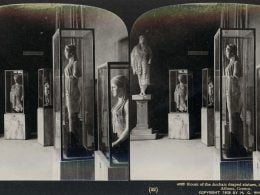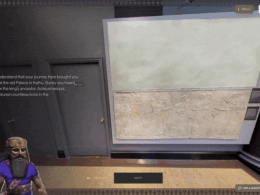This enormous and deeply important ancient temple on the Nile has a new virtual life for students and tourists alike!
In 2022, we partnered with the Ministry of Tourism and Antiquities (MoTA) in Egypt as well as the University of Chicago to 3d scan the entire temple and provide a digital twin of the space for teaching and accessibility.
At the time of writing, this is one of the largest and most detailed digital twins of a heritage site anywhere, and we hope you’ll enjoy! (Here’s a link for more information in case you’re wondering “What is a digital twin?”)

Because of the partnership with the University of Chicago, we also were able to include full sets of line-drawings to interpret the relief carvings in the temple for the Colonnade Hall. This is where much of our knowledge of the temple and its important associated festival derives from. You can view them directly on the walls in the digital twin of the space.
If you’re a teacher in 4th-9th grade, we also prepared a lesson plan, discussion questions, a premium guided tour, and several other teaching resources available on Teachers Pay Teachers
So without further ado, you can check out the full digital twin of Luxor Temple in the ancient metaverse here:
https://luxortemple.mused.org/
And what’s that, did we hear that someone wanted to explore the temple at night too? Yes, that’s correct, this tour is a double feature! You can also check out the sanctuary of the temple at night ?✨
We need you to let us know what you think! Give us feedback with this form: https://mused.typeform.com/to/sN60sQF9
The rest of this blog will be about the digitization process and building the interpretative materials for the temple. We’re applying for an NEH grant to continue to the work, so your feedback in the link above is super valuable to us to help the project secure future funding!
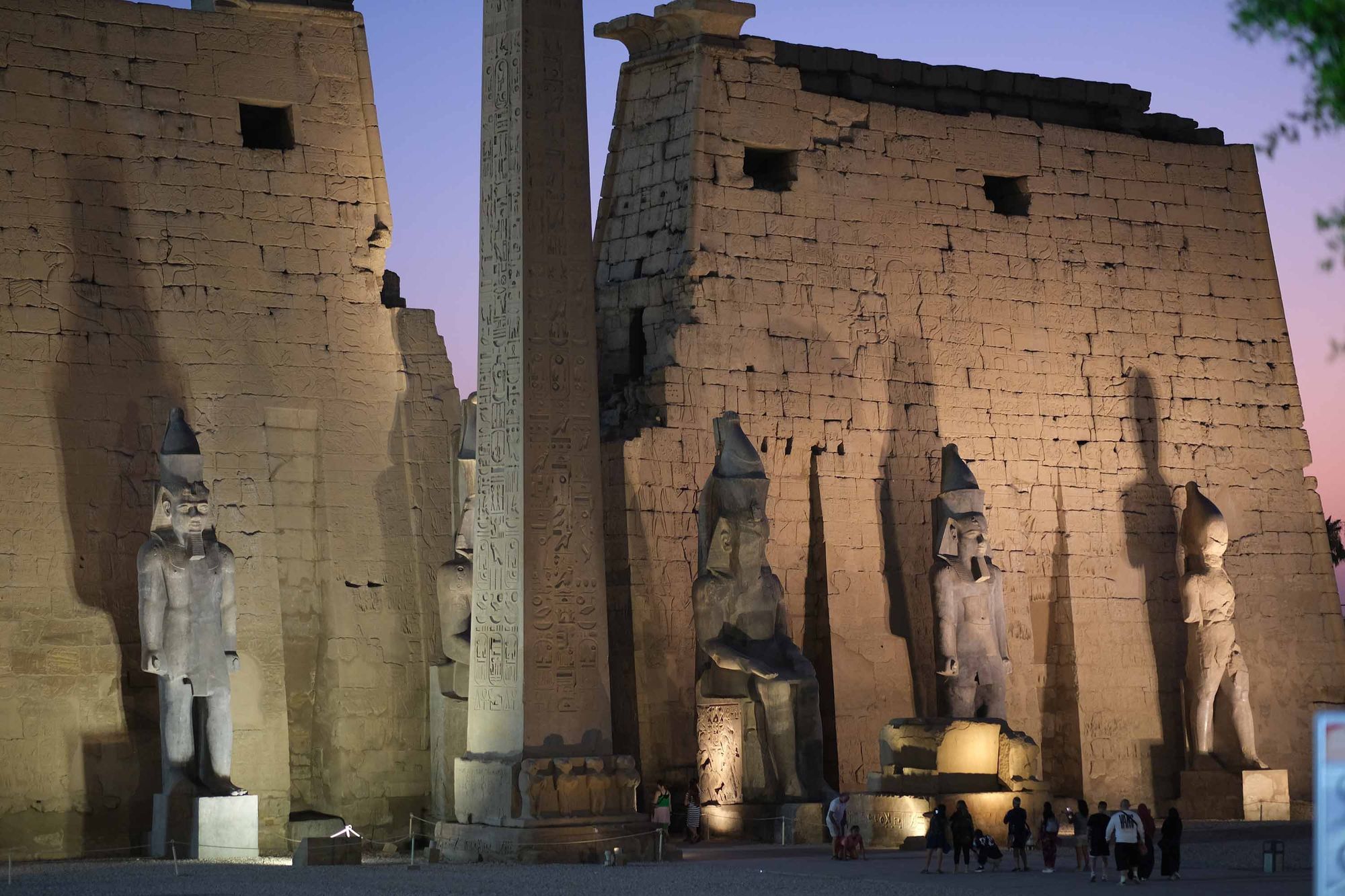
Also check out the awesome History of Egypt Podcast created by Dominic Perry about the Opet Festival here:
🔊 Podcast Guide
What is Luxor Temple?
In case you haven’t heard of Luxor Temple yet, don’t miss visiting this sprawling enormous temple included in the top 5 sites in tours of Egypt. Since it opened to the general public in the 1980s, it quickly became one of the most-visited and appreciated temples in the world, placed directly on the Nile in the heart of Luxor, Egypt. Each year millions of tourists and school groups on field trips gather in its spacious courtyards to appreciate its history and learn about Ancient Egypt.
The temple deservedly has much to boast about–it’s the oldest temple in the world that has had continuous religious worship (over 3,500 years!). It was built by the Ancient Egyptians, occupied by the Romans who converted part into a church, and to this day has an active mosque in the center. For millennia, people have been coming to this place to connect with a higher power.
Additionally, since modern renovations that now incorporate a huge blockyard of various sculpted stones that once were a part of the temple, the temple can proudly say that it’s the largest open-air museum in the world, filled with treasures of the texts and images on its walls.
The temple was originally constructed around 1400 BCE by Pharaoh Amenhotep III, who ruled Egypt at the height of its power and started the ball rolling on building Luxor Temple. Most of the western portion of the temple up to the Colonnade Hall was constructed during Amenhotep’s reign. Amenhotep never saw the finished version of the Colonnade Hall, however, and only 200 years later, the Pharaoh Ramesses II (who you may have also heard of as Ozymandias in the Shelley poem by the same name), continued the building of Luxor Temple, adding a new courtyard, obelisks, and monumental pylon at the entrance that you see today.
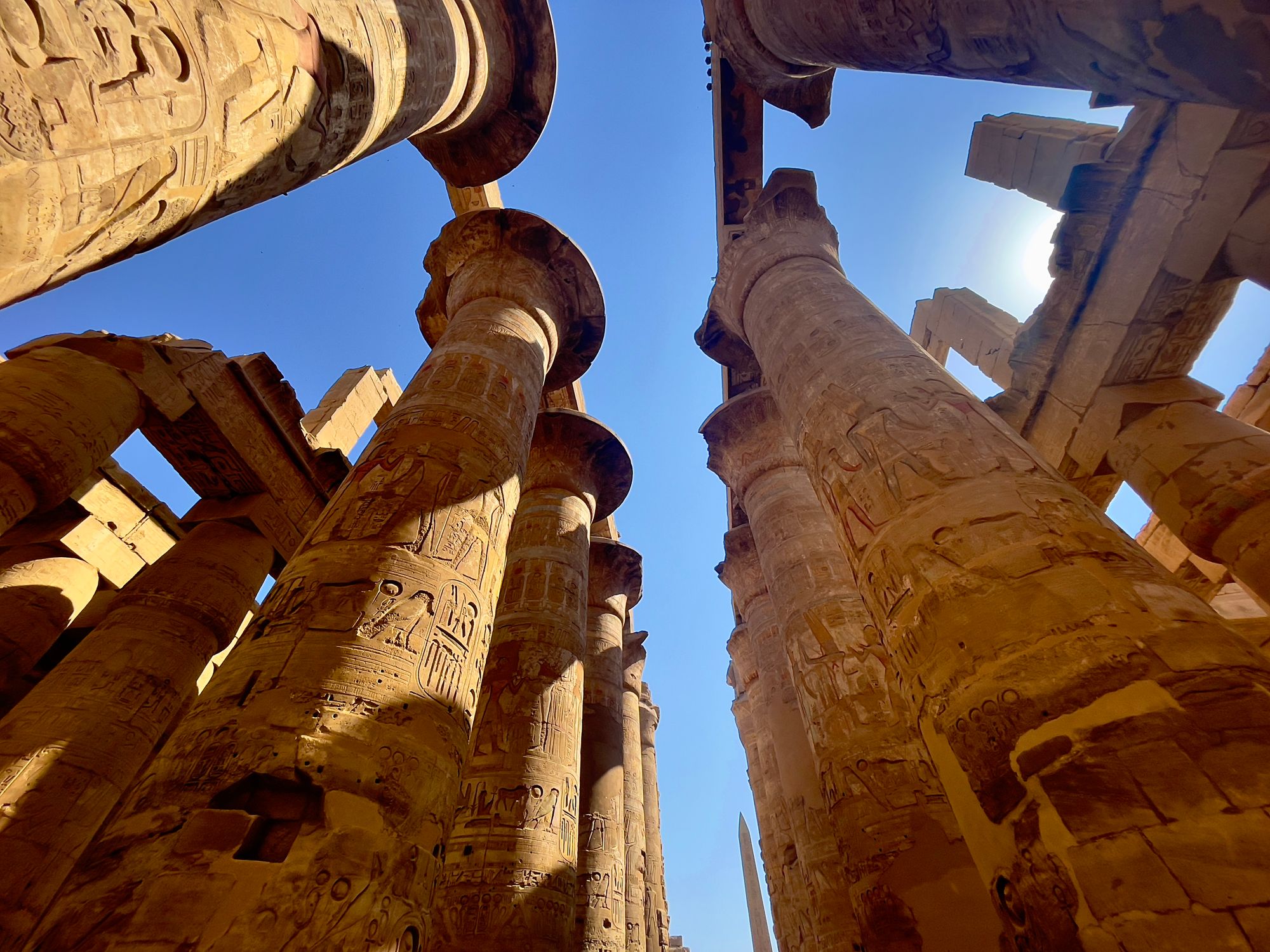
The original name for Luxor Temple was ipet resyt, meaning “the Southern Sanctuary,” and with the elaborately decorated, lofty columns and ornate wall-reliefs, it’s easy to see why it was so appreciated in ancient times. The stories depicted on the walls are some of the most detailed and best preserved in the ancient world, and the original would have been brightly painted everywhere, much different from the bare stone that we see today.
What was carved into the walls at Luxor Temple? And what was the temple’s major festival?
The whole temple is dedicated to the rejuvenation of kingship. The Ancient Egyptians believed that in order to renew the vitality of the pharaoh and subsequently the lands of Egypt, there needed to be an annual renewal of the king with the royal family and major festival to enact the rituals. This became known as the Opet Festival, where Ancient Egyptians would stage a procession from nearby Karnak Temple down the Avenue of the Sphinxes to Luxor Temple, carrying three golden boats with statues of the divine family Amun, Mut, and Khonsu.
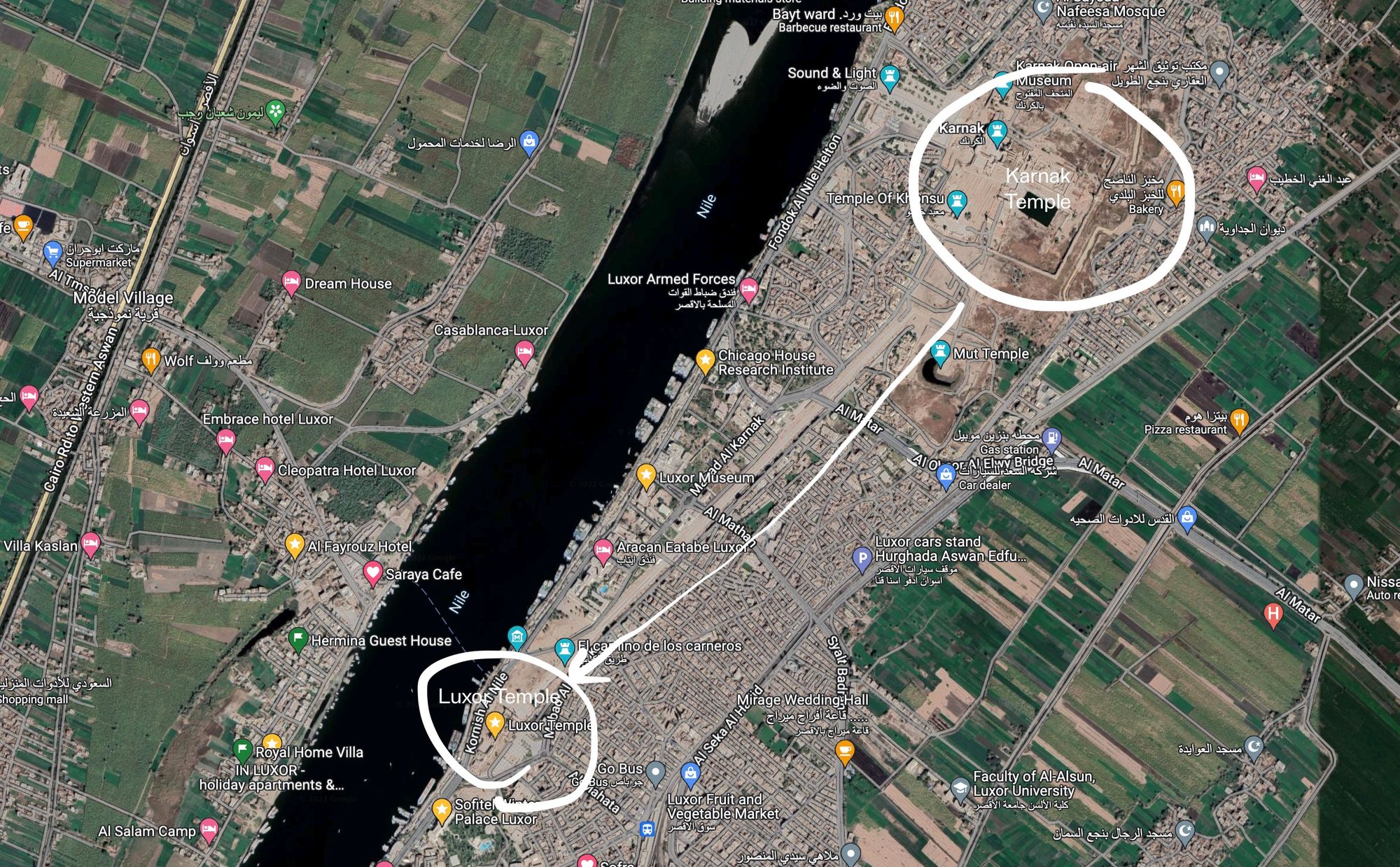
Amun was a major Egyptian god throughout history and became patron god of Thebes. Amun was originally associated with the wind and often represented with rams horns or feathers, but in the New Kingdom of Egypt, he became associated with the Sun God, Ra, and was referred to as Amun-Ra. He was married to his wife, Mut, who was a creator goddess and considered as mother of the world. They had a child, Khonsu, who was associated with the moon and controlled the passage of time as well as protected travelers at night.
Like everything in Ancient Egypt, the annual festival was tied to the rise and fall of the Nile River. For the Ancient Egyptians, this was around the second month of Akhet, which in our calendar today is close to the end of August. During the festival, there were many events including religious ceremonies, banquets, feasts, and of course, the main procession from Karnak Temple to Luxor Temple.
We know so much about the festival because the festival and procession are depicted on the walls of Luxor Temple in great detail. You can see this for yourself in the Guided Tour of the temple, where if you look closely at the walls, you can see thousands of people marching in the procession with sacrifices and other offerings following the boats along their journey from Karnak to Luxor.
In recent years, the Egyptian Ministry of Tourism and Antiquities even put on their own festival for reopening the Avenue of the Sphinxes after years of extensive renovations. You can view the whole procession that they put on with historical recreations of the march from Karnak to Luxor as well as the golden boats, dancers, and more in this video from their YouTube channel:
The Ministry plans of putting on this same festival yearly at Luxor Temple, so if you’re in the area in the fall, definitely look up the dates of the festival to attend!
If you want to learn more about the Opet Festival or Luxor Temple, check out these in-depth, multimedia narratives that we published as a part of the extended reading for before and after the Guided Tour virtual field trip.
And more are coming soon! If you have any requests about what you’d most like to know about, please let us know. These stories are targeted at people who are new to Luxor Temple and maybe Ancient Egypt all together, at about an 8th grade reading level.
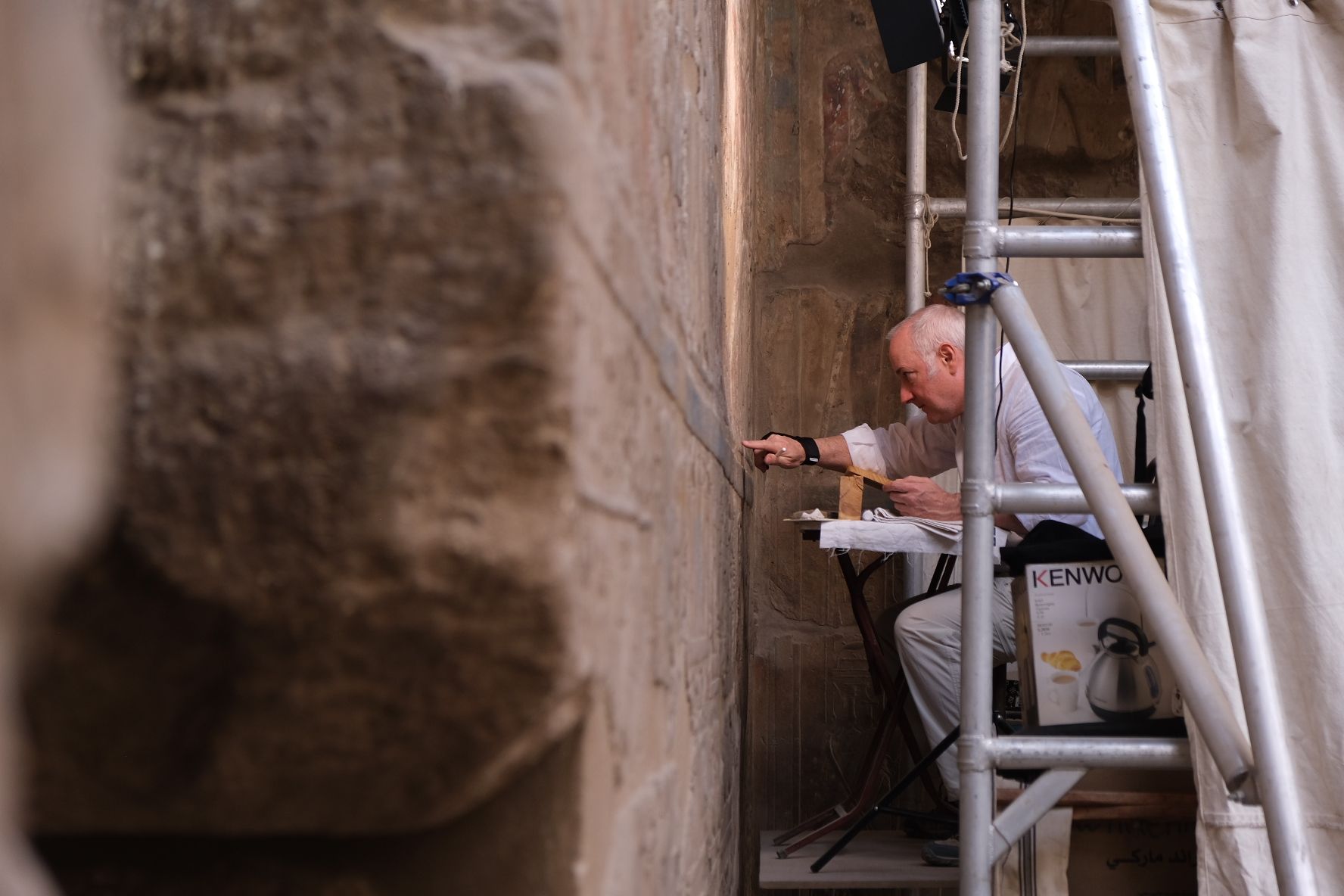
How do we know what we know about the Opet Festival? The Epigraphic Survey at the University of Chicago.
We’ve only learned much of these details about the Opet Festival through the continual assiduous work of the University of Chicago team, collectively the Epigraphic Survey at Chicago House, in doing epigraphic drawings of the entirety of Luxor Temple. If you haven’t heard of epigraphy before, it’s the study of historical inscriptions anywhere they might pop up and combines the brightest and best of science, archaeology, and linguistics to make sense of enormous amounts of highly detailed line-drawings of inscribed materials.
This is an extremely time consuming process involving working from 2d photographs to trace the reliefs with a specific key to annotate depth, shadow, broken pieces, texture, composition, and like–all while working on site in scaffolding in the temple to compare the drawing to the real version.
For a better sense of what this all means, look no further than the Epigraphic Survey’s own digitalEPIGRAPHY website by master artist and epigrapher, Krisztián Vértes. Here’s one example of the drawing in progress from his Instagram account:
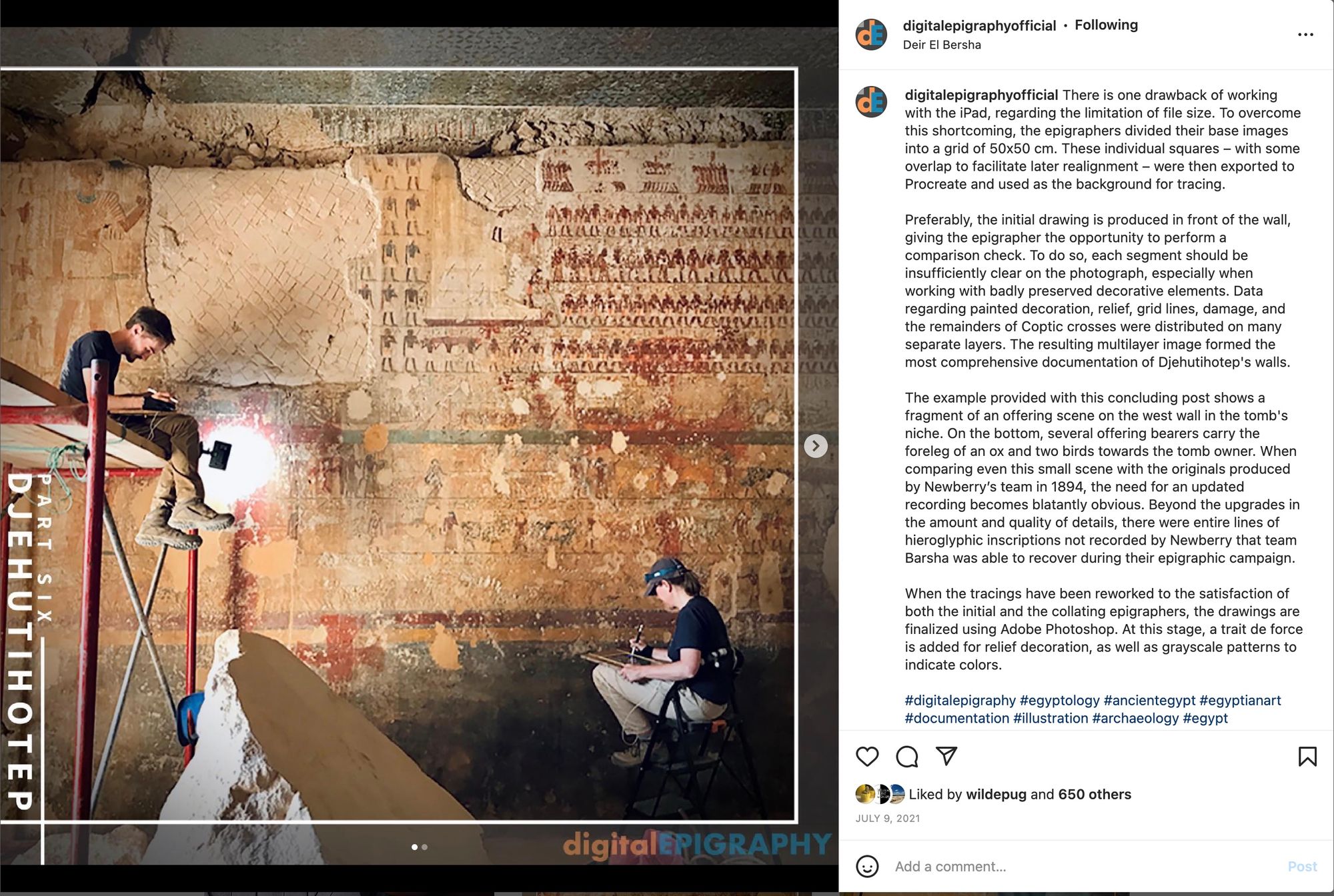
The Epigraphic Survey has its work cut out for it: as excavations continue on the banks of the Nile to create structures like the Mummification Museum in Luxor, suddenly there is an influx of carved and engraved blocks that originated at Luxor Temple. Over millenia and several different occupations, pieces of Luxor Temple were torn down, recarved, rearranged, and spread throughout Luxor generally–and now are in many different museums across the world. Part of the goal of the Epigraphic Survey is cataloging and understanding these blocks to begin to put all of the extensive pieces back together. That’s the reason why you see the large blockyards surrounding the temple today.
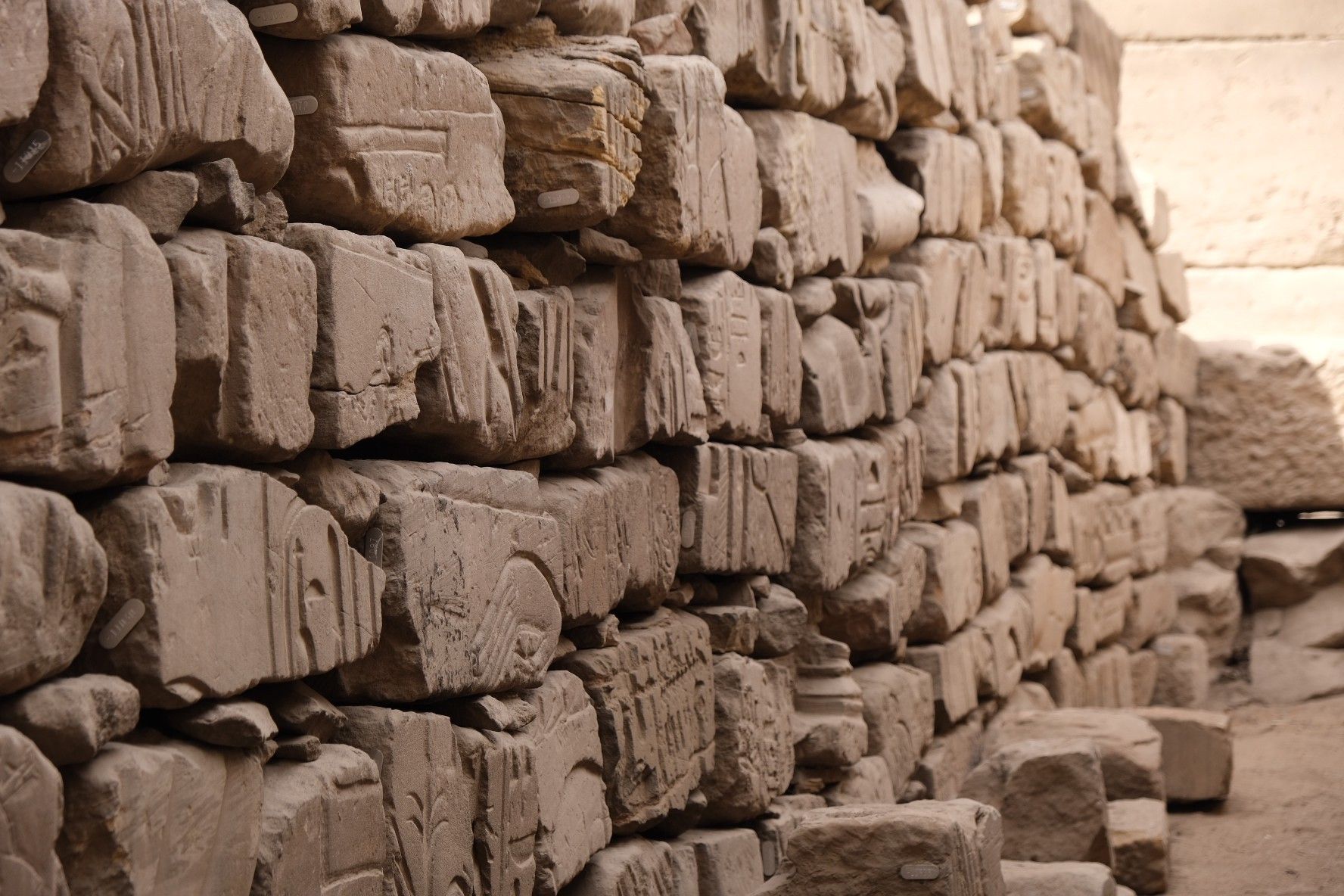
Along with the 2d images and line drawings, in recent years, the Epigraphic Survey started 3d capture of each block for archival purposes and to be used in future reconstructions of the temple. Needless to say, it’s time-consuming and incredibly important work! New connections between the blocks are already being found that tell us important new information about the scenes at Luxor Temple and elsewhere around Egypt. For instance, some of the connections between blocks made by the Director at Chicago House, W. Raymond Johnson, are available to be seen, such as the scene of Akhenaten and his wife sacrificing a duck.

Needless to say, consider supporting the Epigraphic Survey at the University of Chicago! Their continued work is deeply important for our understanding of places like Luxor Temple and the field of egyptology. You can send them a gift by going to the following link and in the last text field writing “Chicago House”: https://giving.uchicago.edu/site/Donation2?df_id=1823&mfc_pref=T&1823.donation=form1 – don’t forget to add the last field dedicating the gift to Chicago House.
Last stop is about capture in the field and processing and publishing the data for teachers, students, and virtual tourists around the world.

Field Capture and Publication Plans for the Luxor Temple Digital Twin
Capturing a 3d scan of the entire temple was a much larger task than anyone at U Chicago had previously thought was possible, but because of recent technological advancements and the general stubbornness of your author, the on-site capture and post-processing actually went quite smoothly! The capture took about 3 months of work on-site in the morning between groups of tourists, who typically filled the temple by late morning to the point that the 3d scans were no longer able to be captured.
As a workaround for this, I would wake early in the morning and cross the Nile to do 3d scanning from 7:00-8:00 AM in high traffic areas when there were no visitors, and after about 9:00 or 10:00 be chased back into corners of the structure to 3d scan while no visitors were present.
We also were able to get permission to 3d scan the roof of the Amenhotep III sanctuary and on top of the walls as well as a secret passage inside one of the main pylons so that while viewing the Free Explore mode in the virtual tour, you can go many more places than you could if you actually went to the temple. We hope that this serves for greater accessibility to dangerous or hard-to-reach areas of the temple (and also serves for giving your legs a break! The temple is a lot of walking).
Building Lesson Plans and Guided Tours for Luxor Temple
Our original goal with the 3d scan was to record a basic overview of the space and then apply for a National Endowment for the Humanities grant to create the interpretative materials that teachers could use to take their classes on a “virtual field trip.” We chose to focus on teachers more than virtual tourism specifically because teachers around the world are the ones that use our guided tours to teach their classes week after week. You can check out our Guided Tour of the Tomb of Queen Meresankh III as an example of our first version of teaching materials that we prepared in three languages.
For Luxor Temple then, as a part of our initial research for the NEH grant we’re applying for, we wanted to create educational materials to accompany the guided tour, and more than that, we wanted to test if selling the teaching materials to accompany the 3d scan would be a valid sustainability plan for ourselves and potentially a source of revenue for the heritage sites that we work with in the future.
As a result, we created a Teacher’s Packet on TeachersPayTeachers that you can check out here: https://www.teacherspayteachers.com/Store/Mused-Virtual-Field-Trips
We’d love feedback on this! If you use one of our tours for teaching and mention us in a social media or blog post, we’ll give you free access and a custom guided tour of your liking for your classroom!
Here’s a quick overview of the Teacher’s Packet and premium Guided Tour used for teaching:
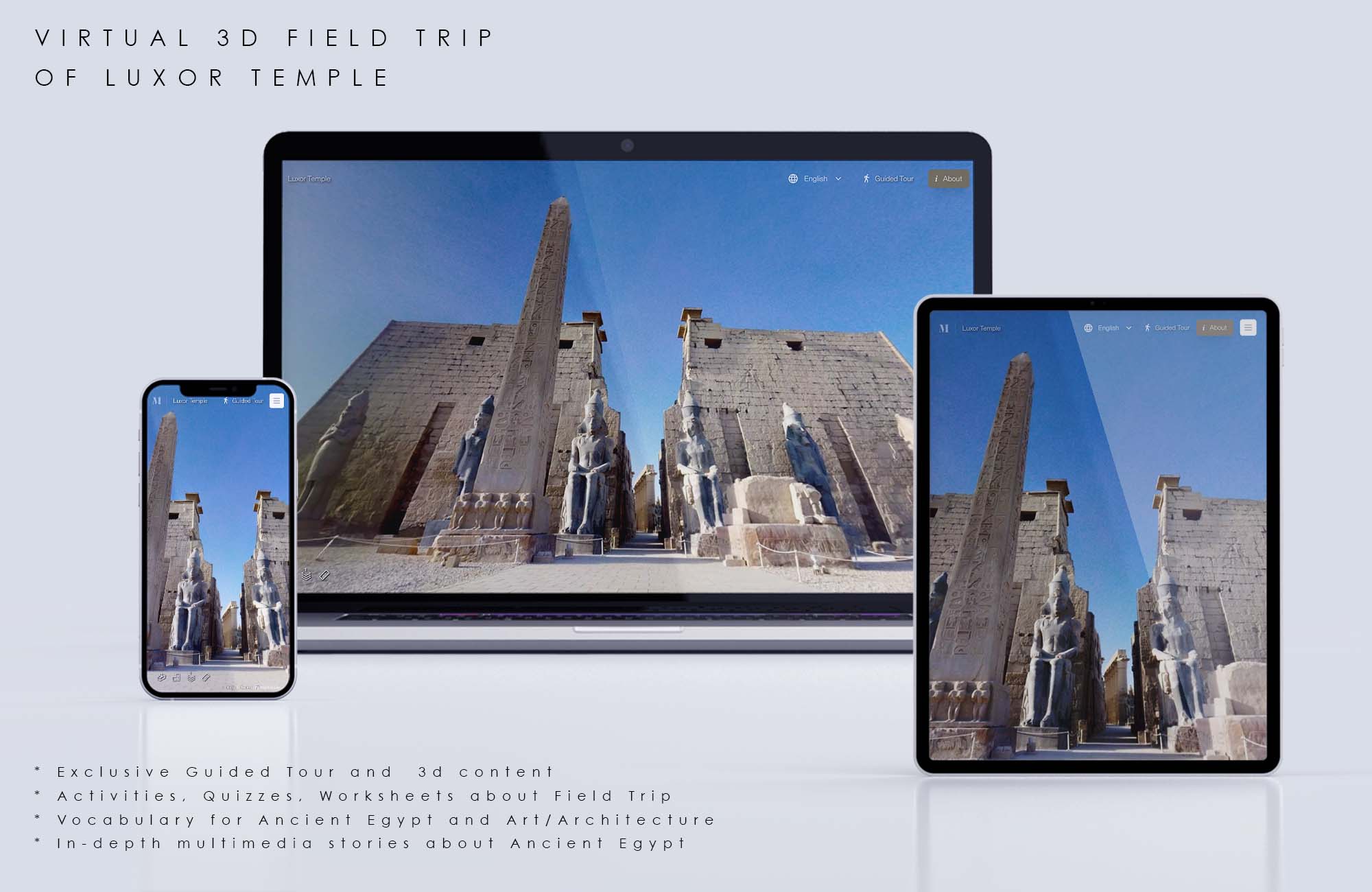
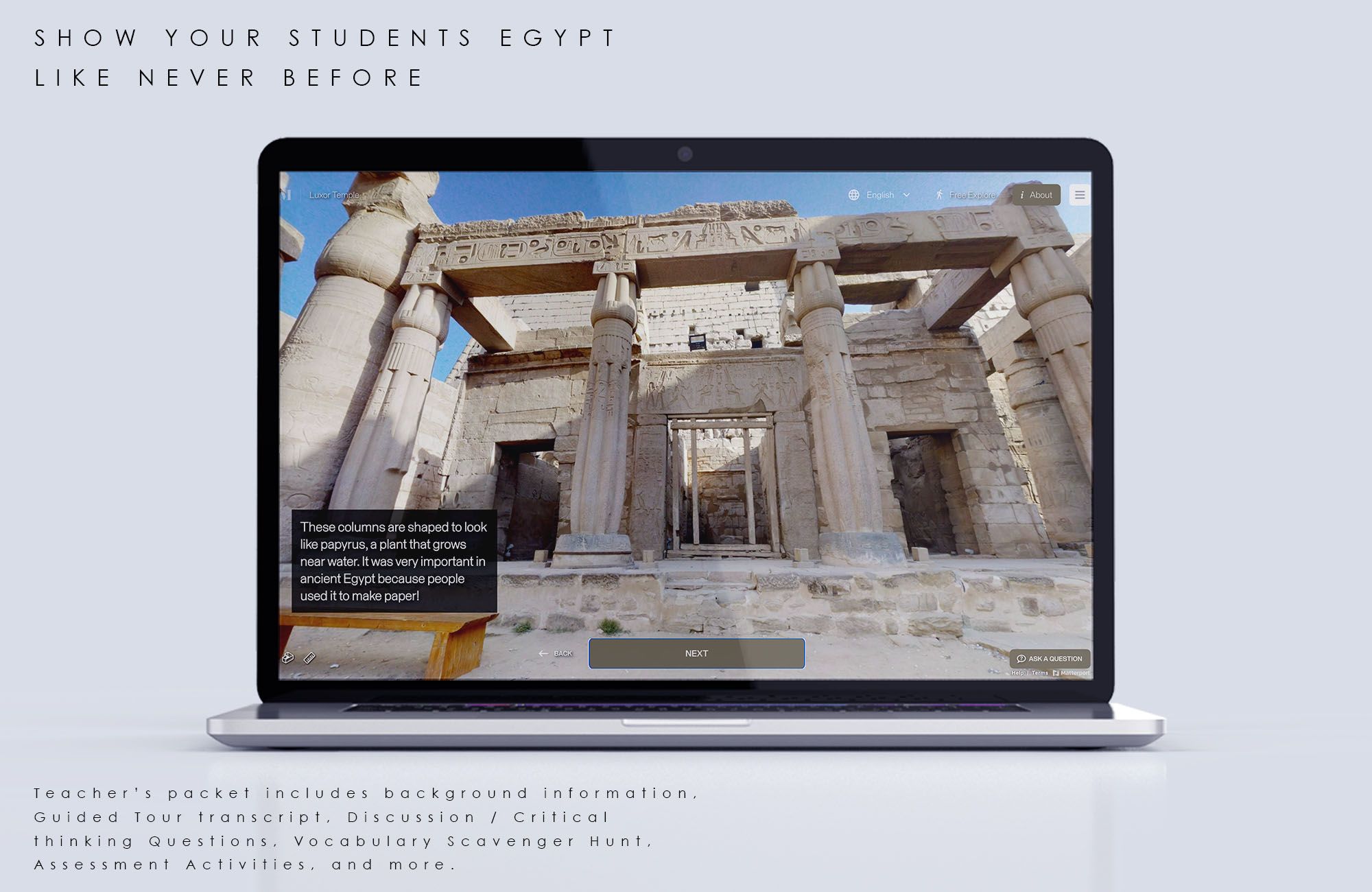
The Teaching Packet includes activities before, during, and after the virtual field trip as well as discussion questions and an interactive scavenger hunt for your students–all designed around core curriculum standards for teaching Ancient Civilizations / Egypt at about a 6th grade level, give or take.
We’re working with social studies teachers around the world to make these resources even better and appropriate for more age ranges and are actively looking to hire teachers who might be interested in contributing!
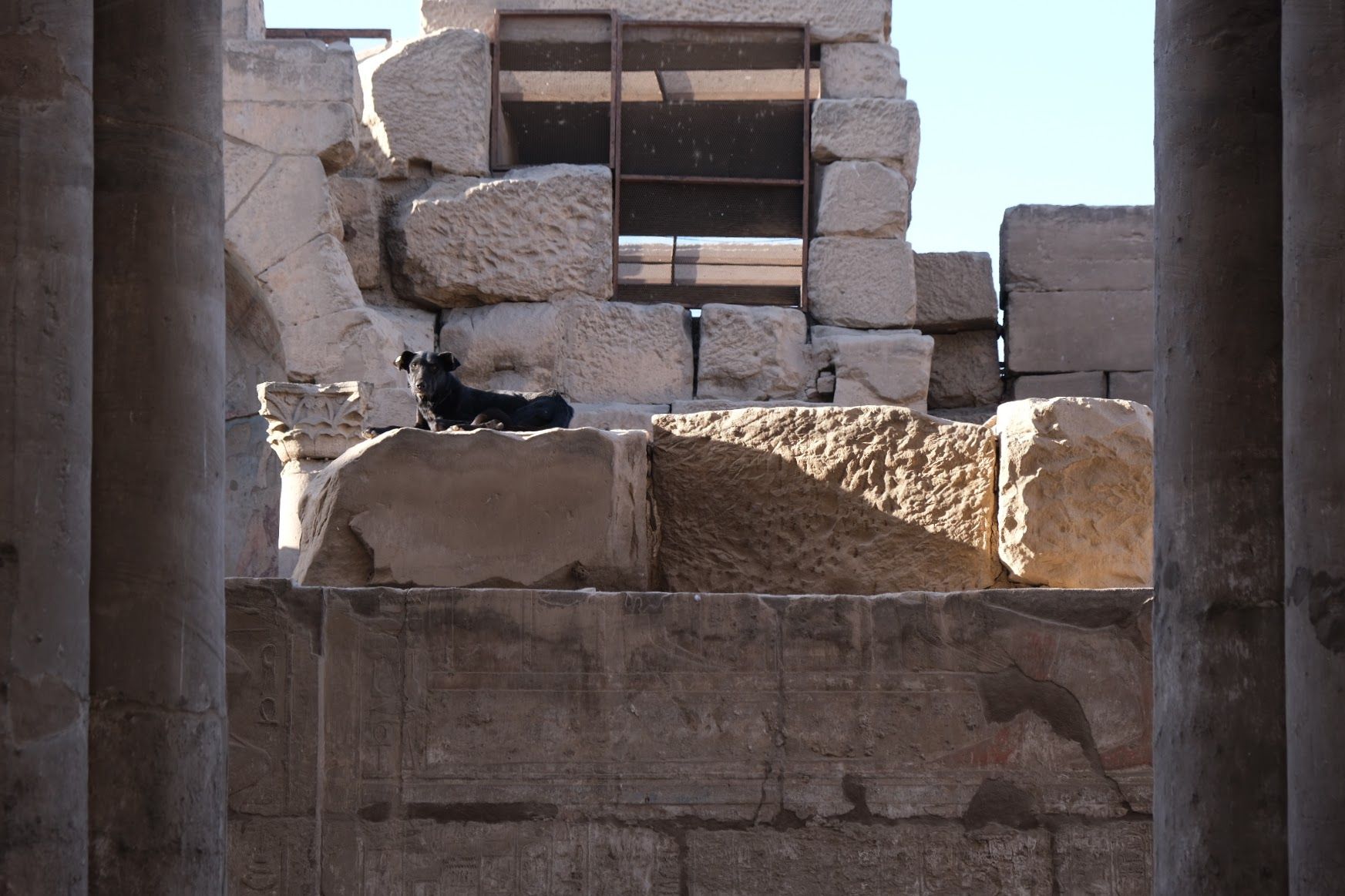
And that’s a wrap! We’ve been off for a few weeks working at sites like Giza, Pompeii, and South Africa to bring the latest in digital heritage to your inbox, so for a teaser of new content to-be, can you answer this: what is the oldest and only remaining wonder of the world that’s still able to be visited? Hint, it has three chambers and your illustrious author was temporarily locked inside one by accident for about an hour.
In other news, reader, we had a major pivot in our core guided tour technological stack, which now uses a fancy new code SDK from Matterport built in TypeScript. The wonders of the world and the interwebs never cease!
Finally, we want to hear from you! Are you teaching one of our guided tours? Do you have a space or an exhibition that you want digitized? We’re wrapping up fieldwork for the summer and planning itineraries for the fall-winter season, so now is the perfect time to reach out and let us know what you’re thinking of.
And thanks so much as ever for all of the incredible people that made the Luxor Temple tour possible! This tour wouldn’t exist without the support from the Ministry of Tourism and Antiquities and Chicago House, including all of the wonderful humans shown in this photograph of the Luxor Temple team:
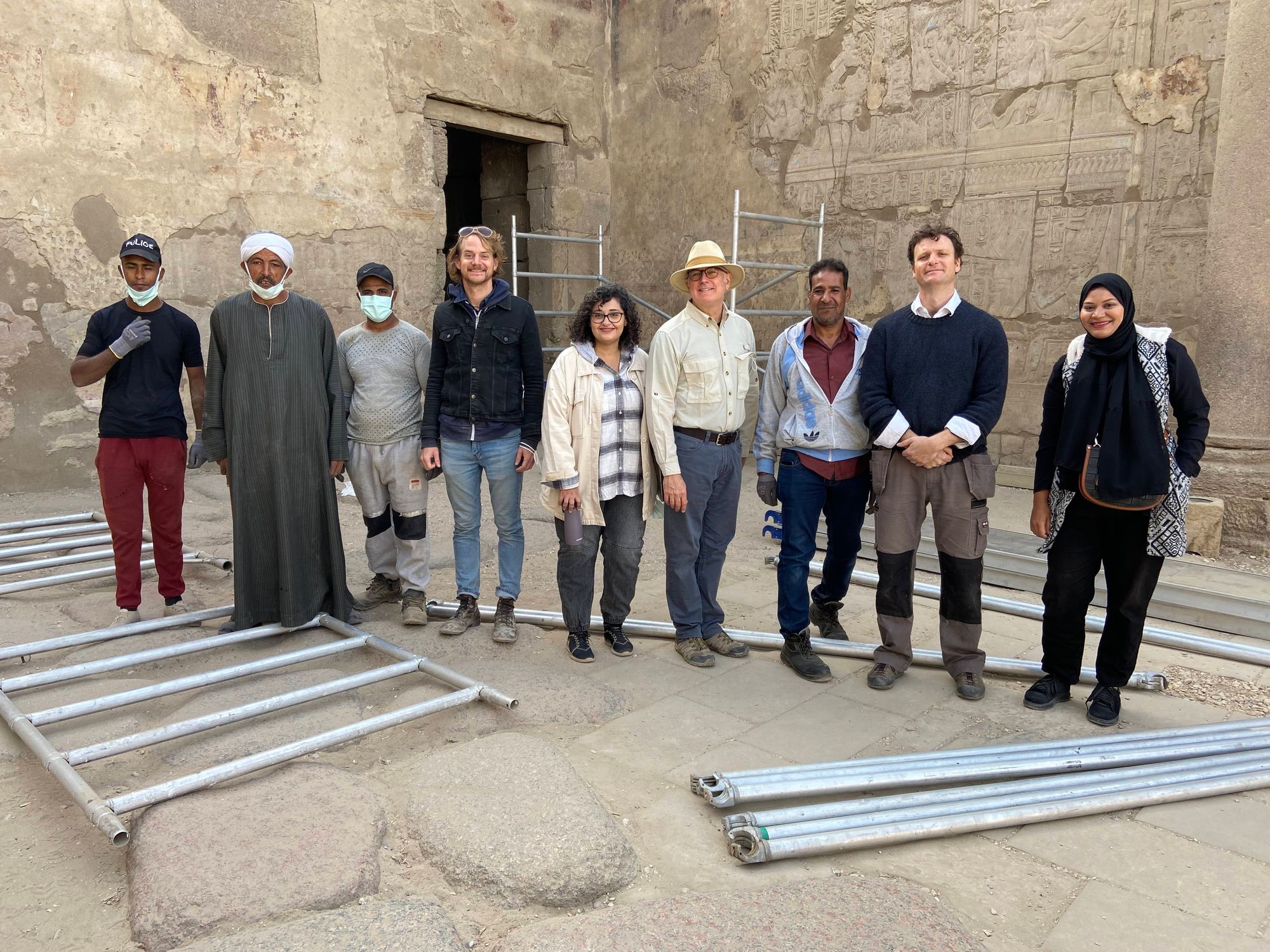
If this article was useful to you or inspiring in any way, please sign up ✨ by entering your email ? at the bottom of this page, and more winged words about guided tours, digital heritage, and museums will arrive to your inbox. You won’t regret it!


